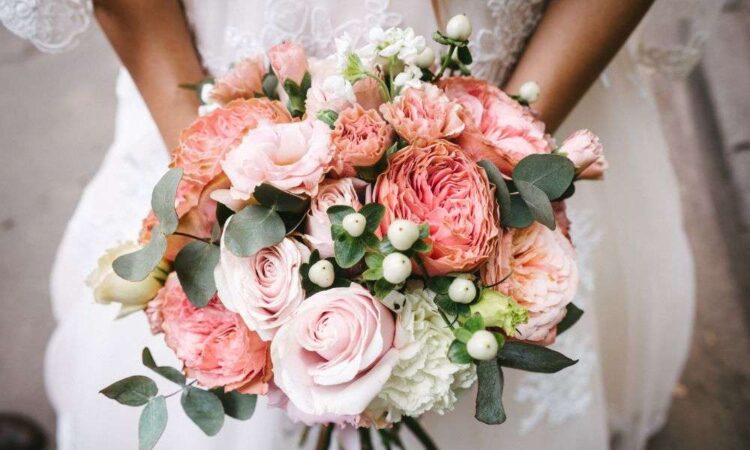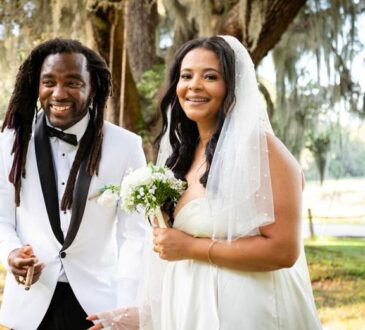
One of the strongest methods of establishing the mood and feel of the wedding is by using flowers. They provide colour, smell, and fashion, as well as reveal your personality as a couple. However, it is easy to get overwhelmed by having to plan wedding flowers, and even easier when you do not know where to begin. That is why it is so convenient to have a checklist. It is not only a way of decreasing the amount of stress but also ensures that your flowers contribute to the overall beauty of your big day.
We will take you through all the steps in this guide, starting with budgeting and style selection, and including the organisation of deliveries and working with last-minute problems. Using this checklist, you can look forward to the process and make the wedding flowers as lovely and memorable as the day.
Introduction Section 1: Preliminary Rewards
Setting a Budget
It is necessary to prepare a budget before deciding on any flowers. As a rule, wedding flowers are a significant expense that couples spend on, typically comprising 8-10% of the entire budget. Remember that prices may differ based on the kinds of flowers, arrangements, and season. Exotic flowers or large centrepieces are examples that will be more expensive. To ensure you do not go overboard, plan your arrangements in a way that the things that are most important to you are given priority and seek seasonal deals, which are usually cheaper.
Choosing a Style
Then think about how your wedding flowers will be. The best fashion trends are romantic, rustic, modern, and whimsical. You should also match the flowers with your wedding theme and colors. Flowers may be used to show your personalities as a couple; hence, consider your mood, which may be dreamy and soft or bright and vivid. Moreover, ask yourself whether the style of your ceremony and reception should be different to ensure diversity but at the same time, still able to unite everything.
Section 3: Inventory Management
Finding a Florist
Then, when you have your style and budget in hand, you must search out a florist. Begin with local research of other florists, reviews, and portfolios. Questions to ask during consultations: their experience, how they design, and how they make arrangements available. One should book in advance—florists may get occupied, particularly during wedding seasons. Comparing a couple of florists will allow you to find out which one understands your vision and fits your budget.
Florists showcase their work in different ways, and browsing examples on sites like https://thanksabunchflorist.com.au can be a useful starting point.
Selecting Flowers
Selecting flowers is not about picking the ones you like. You will want to look at the availability of the season, your budget, and suitability of the flowers to your theme. The blooms in season are generally cheaper and fresher, and imported flowers will probably be a luxury and make it more expensive. Liaise with your florist to blend colors, textures, and types to match your general design.
Design Consultations
It is essential to consult a florist. Carry inspiration boards, photographs, and color swatches to effectively express your vision. Florists will advise you on combinations, quantities, and the type of arrangement. In most cases, one or two meetings suffice; however, it is determined by how complicated your wedding is. The aim is to ensure that everyone is on the same track so that the flowers appear as you imagined.
Section 4: Organisation Planning
Types of Arrangements
The next thing to consider is the exact arrangements that you will require. These are in the form of bouquets, boutonnieres, centrepieces, and ceremony decorations. Each of these types should be considered in its own way; size, style, and budget all come into consideration. The main factor is coordination, so the flowers in the ceremony, reception, and other parts blend with each other.
Logistics and Delivery
The design is not more important than planning logistics. The floral arrangements must be done and delivered in time to avoid wilting or destruction. Determine who will do set-up and tear-down—occasionally, the florist can perform this task; however, you can also have family members or members of the bridal party handle this. Liaising with the venue makes the whole process of delivery to the final position hassle-free.
Section 4: Final Preparations
Review Details
Check all the floral details approximately a month prior to the wedding. Check the kind of flowers, delivery schedules, prices, and quantities. Your florist can also be clearly informed about the big day to avoid any surprises. It is also worthwhile to ensure that the arrangements fit in your colour palette and theme.
Backup Plans
Things may go wrong even when a lot of care is taken. There could be weather changes, last-minute alterations, or supply delays. Have other alternatives for flowers in mind, have additional bouquets or arrangements in place, and talk to your florist about contingency arrangements. With this, you will make sure that your wedding flowers will remain beautiful even if unexpected events occur.
Section 5: On the Wedding Day
Checklist on the Day
Timing is important on your wedding day, and organisation is key. Ensure that all flowers are there and that they are put in place as scheduled. Delegate some of the tasks to family members or bridal party members to assist in arranging. Ensure that the bouquets, the boutonnieres, and the centrepieces are fresh and in position. An inspection can assist in detecting problems that may occur prior to the arrival of guests.
Conclusion
A systematic checklist of wedding flowers guarantees the smooth running of everything, including budgeting and delivery.
Relax and trust your hired professionals, have fun in the process of planning, and concentrate on the happiness and loveliness the flowers will bring to your wedding day. Properly designed flower decorations can make your party look as beautiful and unforgettable as the love that you are celebrating.



